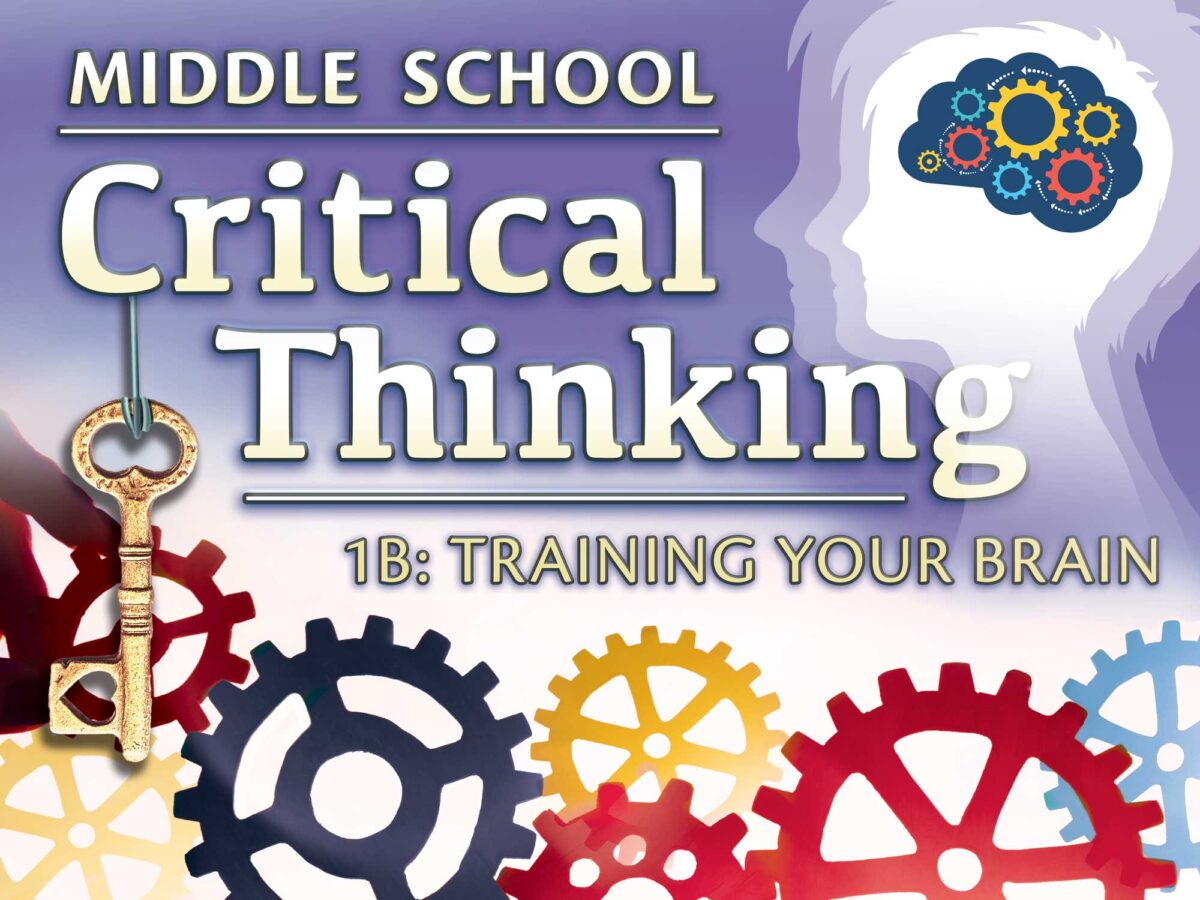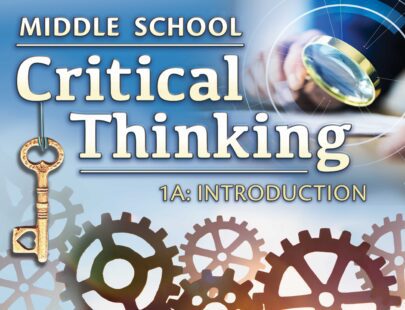
Middle School Critical Thinking 1b: Training Your Brain
You have already learned that critical thinking skills are, well, critical to possess but they’re especially important for you as you are experiencing emotional and physical changes and trying to determine friendships, interests, politics, and more! In this course, you’ll learn more about the foundational skills you need to think logically and critically: observation, evaluation, and analysis. You’ll also learn about things like deductive and inductive reasoning, logical fallacies, verbal and nonverbal communication, components of a debate and debate etiquette, and more. The time has come, let’s get critical!
Units at a Glance
Unit 1: Let’s Get Logical
Have you heard the one about pennies not being logical? It’s hard to figure out why because they make perfect cents. Making sense (not cents) or using logic and logical reasoning play a huge role in critical thinking. When we think about logic, we tend to think about order, details, and analysis. All three of these are key aspects of critical thinking as well. Thinking critically relies on using logic to help solve the problems we encounter. By gaining a deeper understanding of logic, you become a stronger critical thinker.
What will you learn in this unit?
- Define the types of logical reasoning and their relationship to critical thinking and problem-solving
- Explain the difference between valid and sound arguments
- Discuss the significance of logic diagrams and how they aid in critical thinking
- Describe the importance of Greek and Latin root words to logic and communication
Unit 2: When Logic Goes Wrong
Logic plays a crucial role in how we understand and communicate ideas. But what happens when logic goes wrong? Sometimes as people strive to communicate or share their ideas with others, they fall into the trap of faulty logic. There are many different types of faulty logic, or logical fallacies, that can lead us down the path of believing misleading or even deceptive notions. Learning to recognize various logical fallacies will help you to hone your critical thinking skills and be better prepared to communicate clearly as well as prevent yourself from falling for a faulty argument.
What will you learn in this unit?
- Define logical fallacies and how they impact arguments, critical thinking, and problem-solving
- Explain fallacies of relevance, including ad hominem, argumentum ad populum, and appeal to authority
- Describe fallacies of presumption, including begging the question, an appeal to ignorance, and a slippery slope
- Discuss other types of logical fallacies, including a straw man, a red herring, and an equivocation
Unit 3: Arguing Well: Understanding Rhetoric
To be able to effectively persuade someone about the truth of an argument isn’t always just about the facts. Many times, the most effective arguments are those that are well thought out and well presented—not necessarily the ones that are accurate. Creating strong arguments, thinking critically, and solving problems require us to use a lot of the same skills! Strong critical thinkers can not only spot a good argument but also can create one as well. Learning to use logic and rhetoric allows us to draw people in and convince them to believe the things we say.
What will you learn in this unit?
- Define rhetoric, including the rhetorical triangle, and its role in arguments, critical thinking, and problem solving
- Explain the persuasive appeals of ethos, logos, and pathos and their effects on critical thinking
- Discuss the structure of arguments, including premise or claim, counterclaim, evidence, assumptions, and conclusions
- Describe rhetorical devices such as irony, rhetorical questions, and zeugma, among others, and their relationship to arguments, critical thinking, and problem solving
Unit 4: Figurative Language
Shall I compare this unit to the prior? It is more lovely and more interesting. Well, to be fair, we think all the units in this course are interesting. But there is something that makes figurative language feel extra special! Like sprinkles on an ice cream cone or butter on popcorn, figurative language adds that extra oomph to any message or piece of writing. Critical thinkers know that by being able to recognize and utilize figurative language, they add another crucial tool to their toolbox of strong communication skills.
What will you learn in this unit?
- Define figurative language and its role in arguments, critical thinking, and problem-solving
- Discuss the most common types of figurative language that fall under the category of ‘figures of speech’ and their impact on critical thinking and argumentation
- Explain the most common types of figurative language that fall under the category of ‘devices of sound’ and their impact on critical thinking and argumentation
- Describe additional examples of figurative language and their efficacy in poetry, prose, and speech
Unit 5: Speaking Up
Critical thinking and clear communication go hand-in-hand. After we observe, analyze, and decide on a path, the obvious next step is to communicate our intentions. Communication is a two-way street. As much as we want to be able to share our ideas, we should also be open to hearing other people’s ideas too. Learning how to both talk to others and listen to them is an integral part of being an effective communicator. In this unit, we’ll learn about how to prepare and deliver persuasive speeches and engage in productive debates. We’ll also learn more about non-verbal cues and how to ‘read a room.’
What will you learn in this unit?
- Discuss the best practices for giving an effective speech
- Define non-verbal cues and explain their relevance to clear, effective communication
- Examine stage fright, how it impacts communication, and how to use critical-thinking skills to solve it
- Describe debate etiquette and the impact of one-way versus two-way communication
Unit 6: The Big Picture
Critical thinking, problem-solving, and logic show up in every aspect of our lives. They help us to understand the past, assess the present, and plan for the future. By sharpening our critical thinking and problem-solving skills, we become better prepared to use reason and logic when faced with challenges and choices. Whether we’re using the scientific method, spotting logical fallacies in public figures’ speeches, or working to solve the mystery as we read about the adventures of Enola, Sherlock, and many other great detectives, how we observe, analyze, and make decisions about the world around us is crucial.
What will you learn in this unit?
- Explain how logic relates to personal responsibility and individual freedom
- Discuss how logic relates to social and economic principles as well as our civic duties
- Explore how logic can be applied to planning for the future
- Demonstrate the efficacy of critical thinking and logic as it applies to making important life choices
Required Materials
Physical
• Poster board
• Art supplies
• Helper
• Video recording device
Software
• Word processing software
• Presentation software
Optional
• Graphic design software
• Audio recording device
• Spreadsheet software
• Video conferencing software
• Digital camera
• Audio recording device


